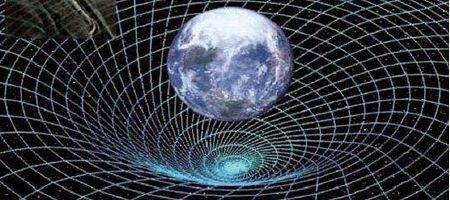Mathematicians say they’ve discovered a new way to crinkle up the fabric of space-time – at least in theory.

“We show that space-time cannot be locally flat at a point where two shock waves collide,” says Blake Temple, professor of mathematics at UC Davis. “This is a new kind of singularity in general relativity.”
Einstein’s theory of general relativity explains gravity as a curvature in space-time – but starts from the assumption that any local patch of space-time looks flat.
The exception is a singularity, a patch of space-time that cannot be made to look flat in any coordinate system: inside a black hole, for example, where the curvature of space becomes extreme.
Temple and his team examined the mathematics of how shockwaves in a perfect fluid can affect the curvature of space-time in general relativity.
A shockwave creates an abrupt change, or discontinuity, in the pressure and density of a fluid, and this creates a jump in the curvature. But it’s been known since the 1960s that the jump in curvature created by a single shock wave isn’t enough to rule out the locally-flat nature of space-time.
The team used math to simulate two shockwaves colliding, and analyzed what happens when shockwaves cross. And they found this created a new type of singularity, which they dubbed a ‘regularity singularity’.
The team’s now investigating whether the steep gradients in the space-time fabric at a regularity singularity could create any effects that are measurable in the real world – such as gravity waves, for example.
General relativity predicts that these are produced by events like the collision of massive objects such as black holes, although they haven’t yet been observed in nature.
Regularity singularities could also be formed within stars as shockwaves pass within them, the researchers theorize.





